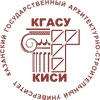About the authors
| First name, Middle name, Last name, Scientific degree, Scientific rank, Current position. Full and brief name of the organization, The organization address. | Zamaliev F.S. – candidate of technical science, associate professor E-mail: This e-mail address is being protected from spambots. You need JavaScript enabled to view it Bikkinin E.G. – post-graduate student E-mail: This e-mail address is being protected from spambots. You need JavaScript enabled to view it Kazan State University of Architecture and Civil Engineering The organization address: 420043, Russia, Kazan, Zelenaya st., 1 |
| Title of the article | The main factors influencing the initial stress-strain state of steel-concrete composite structures |
| Abstract. | In our country, more and more there is a tendency of application steel-concrete composite structures in civil engineering. However, for larger scale their applications on the one hand, you must have design standards based on deformation methods that take into account the non-linear operation as the materials section and construction as a whole, on the other hand should be good to know the features of the stress-strain state of a composite structure, which is the steel-concrete composite structures not only during operation, but also to the operational period. The analysis estimated the prerequisites codes and standards organizations dedicated to the design of bridges, but steel-concrete composite structures of overlaps and covers civil buildings are significantly different from the bridge structure, they have a less massive cross section and small bays compared to overhead structures. Therefore, mechanical transfer factors of internal stress-strain state of the steel-concrete composite bridge span on a «flexible» of the steel-concrete composite slab will is wrongful. Wanted to study the influence of internal factors in the operational period up to the stress-strain state of a steel-concrete composite slab section of civil buildings. The behavior of the steel-concrete composite section should be analyzed with «germ», i.e. since the beginning of hardening concrete, because the first hours of silicification cement paste concrete begin early during the initial stress-strain state for internal processes, such as shrinkage, creep, swelling, self-heating of concrete, etc. The article, based on a set of rules and recommendations for the design of bridge structures are shown approaches to accounting internal processes occurring in a section of steel-concrete composite structures. Presents attempts to move them to the «flexibility» of the composite slab of civil buildings to incorporate an internal stress-strain state of the shrinkage, creep, etc., to the operational processes within the composite section. |
| Keywords. | steel-concrete composite structures, shrinkage and creep at an early stage, redistribution of stresses, a set of rules, standards organizations. |
| For citations: | Zamaliev F.S., Bikkinin E.G. The main factors influencing the initial stress-strain state of steel-concrete composite structures // Izvestiya KGASU. 2015. №4(34) P.161-165. |














